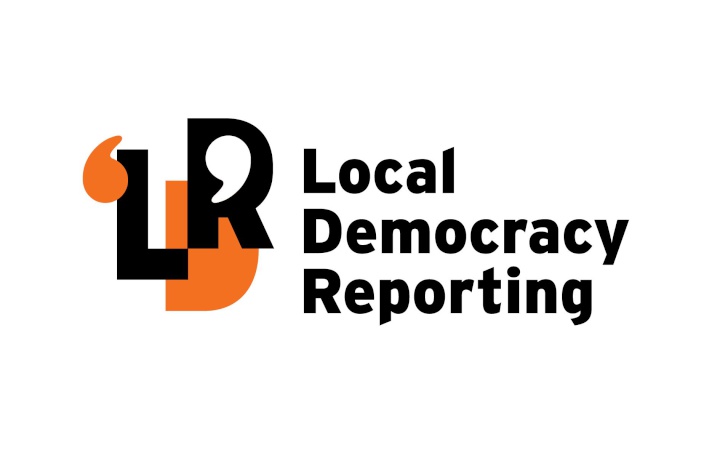Wairoa A&P Society’s president says there’s a feeling of sadness that the town’s showgrounds will be lost to a flood spillway.
A revised plan for the Wairoa flood spillway, announced on Wednesday by Hawke’s Bay Regional Council (HBRC), has halved the number of houses impacted and reduced the area of Māori whenua to only 2ha.
But there was no way to avoid the showgrounds.
Michael Thomas said there was a lot of history behind the venue.
“We have been going for more than 100 years. But we are a community organisation and the project is for the good of the community,” Thomas said.
“We’ve been in the firing line from the beginning, but it has to be done to protect property and the town.”
Option 1C+, announced on Wednesday, is similar to Option 1C.
It is a floodway that crosses close to the most direct overland path and aligns with historical flood patterns.
While not finalised, when compared with Option 1C, it has similar overall construction costs and levels of secondary mitigation works on the southern side of the Wairoa River.
HBRC this week endorsed the plan as the preferred option for North Clyde, which has eight homes, 2ha of Māori whenua and 29ha of general land in its path.
Crown manager Lawrence Yule said they made it clear from the start that the kaupapa for the project was about finding the best possible technically viable solution that minimised negative impacts on whānau, their land and homes and protected marae, urupā and cultural taonga.
“When we started engaging directly with mana whenua, potentially impacted owners and the wider community in October last year, the people of Wairoa reiterated the deeply significant cultural, spiritual and historical importance of whenua Māori.”
Wairoa District Mayor Craig Little said a lot of work had gone into the updated plan.
“Every little bit of land is important and I admire the courageous people who are going to lose their land,” Little said.
“Only the people who are going through it can truly understand the impact.
“I think some of the grumblers have forgotten the devastation that happened from the floods. We never want to go through that again.”
“But there’s still a lot more to do.”
Wairoa District Council, Hawke’s Bay Regional Council and Tātau Tātau o Te Wairoa Trust have been in discussions for months about spillways.
The Tātau Tātau trust, a post-settlement entity for the iwi and hapū of Te Rohe o Te Wairoa, has said it won’t support a specific recommendation and the decision on a way forward should be made by mana whenua.
Members of the trust walked out of a HBRC meeting in February.
On Thursday, the trust’s chairman, Leon Symes, said its position remained the same.
“While we recognise that fewer home owners are affected by option 1C+, we still have concerns with 1C+ that directly impact certain mana whenua,” Symes said.
“Additionally, we must acknowledge the whanau who were previously not involved or affected by the 1C option, but are now part of the 1C+ option.
“It’s important they are engaged in a timely and respectful manner, with all relevant information provided by the regional council.”
Wairoa resident Wiki Hauraki, who was in line to lose a small part of their whānau land under Option 1C but is not now affected, said she’s glad there was progress but wished it was moving faster.
“Some people’s insurance has been declined until a flood plan is in place, while people who can get it are facing astronomical increases in their premiums,” Hauraki said.
Yule says further cultural assessment is under way to ensure Option 1C+ continues to protect marae, urupā and cultural taonga.
A Cultural Impact Assessment for the two previously preferred Options 1C and 1D was undertaken in January, and the information was factored into the refinement process to ensure Option 1C+ avoids known sites of cultural significance such as the Makeakea urupā.
Option 1C+ remains subject to land accessibility, further engagement with mana whenua and potentially impacted home and landowners, including owners of whenua Māori, is also ongoing.
The Government has contributed $70 million to the town’s flood protection with a March 31 deadline.
The funding was given to the town for future resilience following two devastating flood events – Cyclone Gabrielle inundation in February 2023, followed by hundreds more homes flooding in June last year as the river mouth blocked during a storm.
LDR is local body journalism co-funded by RNZ and NZ On Air.



 Gordon Campbell: On The Left’s Electability Crisis, And The Abundance Ecotopia
Gordon Campbell: On The Left’s Electability Crisis, And The Abundance Ecotopia NZDF: Battlefield Remains Unearthed By Wildfires In Gallipoli Covered Over By Kiwi Team
NZDF: Battlefield Remains Unearthed By Wildfires In Gallipoli Covered Over By Kiwi Team NZ Police: New Zealand Police team up with Z Energy, NZTA and ACC to remind Kiwis to drive safe this Easter
NZ Police: New Zealand Police team up with Z Energy, NZTA and ACC to remind Kiwis to drive safe this Easter NZCAST: NZCAST Leads Ongoing Cross-Agency Collaboration To Break Down Barriers For Survivors Of State Abuse
NZCAST: NZCAST Leads Ongoing Cross-Agency Collaboration To Break Down Barriers For Survivors Of State Abuse Regional and Unitary Councils Aotearoa: Regional And Unitary Councils Back A Practical FWFP System
Regional and Unitary Councils Aotearoa: Regional And Unitary Councils Back A Practical FWFP System NZ Government: Stay Safe On Our Roads This Easter
NZ Government: Stay Safe On Our Roads This Easter YWCA: Global Push Back Against Gender Equality A Growing Crisis In Aotearoa
YWCA: Global Push Back Against Gender Equality A Growing Crisis In Aotearoa


